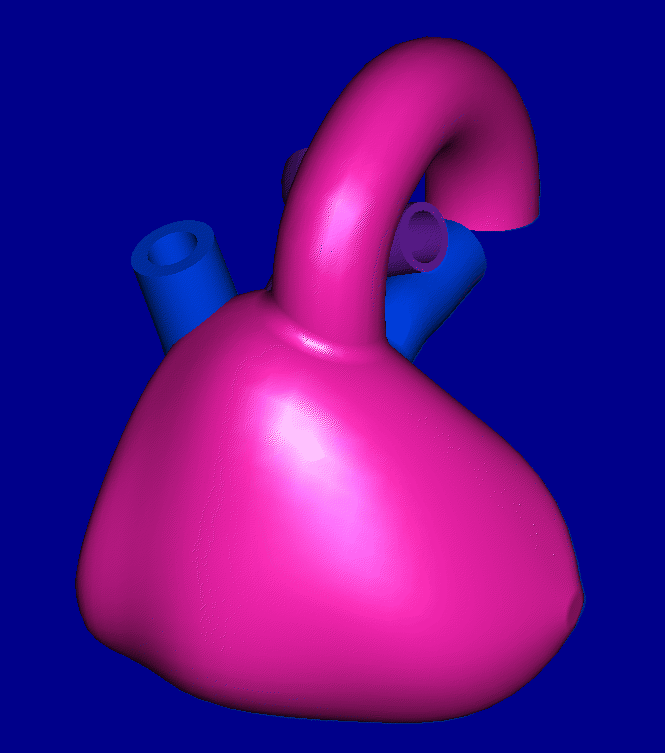Redesign Proposal:
The redesign is to create a
teaching model of the human heart that is transparent and simulates blood
flow through the heart. The teaching model will consist of a model heart
with hollow internal cavities, a tubing system representing the veins and
arteries that connect to the heart, and an external pump that will attach
to the ends of the tubes and regulate fluid flow through the model. The
entire model will be made transparent material such that students can watch
the flow of the fluid through the model.
Redesign Approach:
1. Conduct research on current heart models including:
Design Parameter:

Final Results:
Upon completion of the Pro/ENGINEER
heart model, a physical model was created using stereolithography. A unique
characteristic of this project is that the model was generated using the
Quckcast process. This process differs from all other SLA models made at
the University of Maryland in that the part is not made using internal
support stuctures, but a "honeycomb" grid.
The "honeycomb" grid is eighty percent
hollow. Furthermore, this process allows the structure to be constructed
significantly faster than using a typical support structure. However, the
Quickcast process requires several additional precautions and features
to be made to the part model. First of all, the grid must be able to be
drained from the internal section of the part. Thus, the heart model had
to include several vents both at the top and bottom of the part. Also,
the grid is very water sensitive therefore the curing process of the grid
does not include alcohol treatment. As a matter of fact, one must take
precaution as to not put alcohol on the grid section or else the grid will
deform.
Future Recommendations:
There are a number of steps
that can be taken in the future to further this project. The first and
most tedious step would be to continue manipulating the surface of the
Pro/ENGINEER heart model to make the contours of the model more closely
match the contours of the heart. Second, the Pro/ENGINEER model needs to
include four internal cavities that correspond to the four chambers of
the human heart. Also, a pump system needs to be purchased and attached
to the physical model.
Produced by Hyun Jin O
E-mail: o.hyunjin@usa.net